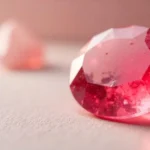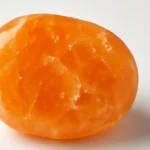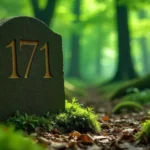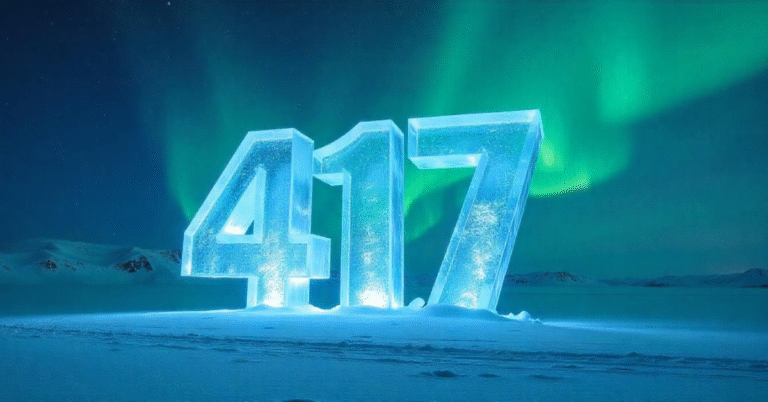Sapphires stone are regarded as significant and pricey jewels, in fact. A number of criteria, such as colour, clarity, cut, and carat weight, impact their value. Here are a few essential sapphire-related points:
Colour: The most highly valued sapphires are those with a deep, rich blue hue that are commonly known as “cornflower blue.” On the other hand, sapphires are coloured in a range of hues, such as pink, yellow, green, and purple. The substance and clarity of the hue have a big impact on the stone’s price.
Clarity: Less inclusions, or internal faults, translate into a more expensive sapphire. Certain inclusions are acceptable, nevertheless, particularly if they don’t compromise the stone’s overall beauty or clarity.
Cut: The sapphire’s cut can intensify its colour and luminosity. Beautifully cut sapphires reflect light, making them more valuable and appealing to look at.
Carat Weight: Larger sapphires have a higher value because they are rarer. The larger the stone, the more expensive per carat it is.
Origin: The sapphire’s origin may have an effect on its value. For example, sapphires from Sri Lanka, Burma (Myanmar), and Kashmir are highly valued because to their remarkable quality and distinctive features.
In contrast to Other Gemstones
The three gemstones known as the “Big Three” are sapphires, emeralds, and rubies. Fine quality rubies can cost up to $1,000,000 per carat, making them generally more expensive than sapphires. The average price range for sapphires is $1,000 to $11,000 per carat, with finer stones sometimes costing between $450 and $1,200 per carat.
Table of Contents
ToggleSapphire Types and Their Value
Kashmir Sapphire: Known for their rich, velvety blue colour and remarkable clarity, Kashmir sapphires are recognised as the most precious variety of gemstone. There are just a few hundred known to exist, making them incredibly rare. They can command millions of dollars at auction.
Padparadscha Sapphire: Known for its unusual pink-orange hue, this sapphire is regarded as one of the rarest varieties. Premium Padparadscha sapphires, which are mined in Tanzania and Sri Lanka, may fetch high prices as well—often several thousand dollars per carat.
Ceylon Sapphire: Distinguished by their vivid blue hue, Ceylon sapphires are a favourite in upscale jewellery. Depending on quality, their costs can range greatly, from hundreds to thousands of dollars per carat.
Australian Sapphire: Because of their distinctive colour zoning and rich blue hue, these sapphires are becoming more and more well-known. Depending on quality, they can cost anything from a few hundred to several thousand dollars per carat.
Myanmar Ruby Sapphire: Originating from the Mogok area of Myanmar, these stones are prized for their intense red hue and scarcity. The potential value of these gemstones was highlighted by the $50 million auction sale of the most costly Burmese Ruby sapphire.
Creative Ideas for Sapphire Jewellery
Sapphire Engagement Rings: Sapphires are a stunning and distinctive substitute for customary diamond engagement rings. Alternatives include more unusual designs with coloured sapphires or traditional blue sapphires set with diamonds.
Declarative Earrings: Vibrant blue sapphire hoops may add colour and elegance to any ensemble while making a striking fashion statement.
Sapphire Pendants: A traditional sapphire pendant is a classy complement to any jewellery set and appropriate for both formal and informal settings.
Mixed-Metal Designs: Adding sapphires to other metals, such rose or white gold, can make a dramatic contrast and improve the piece’s overall appearance.
bespoke Designs: A lot of jewellers provide bespoke designs so that people can make distinctive sapphire pieces that suit their own tastes and styles.
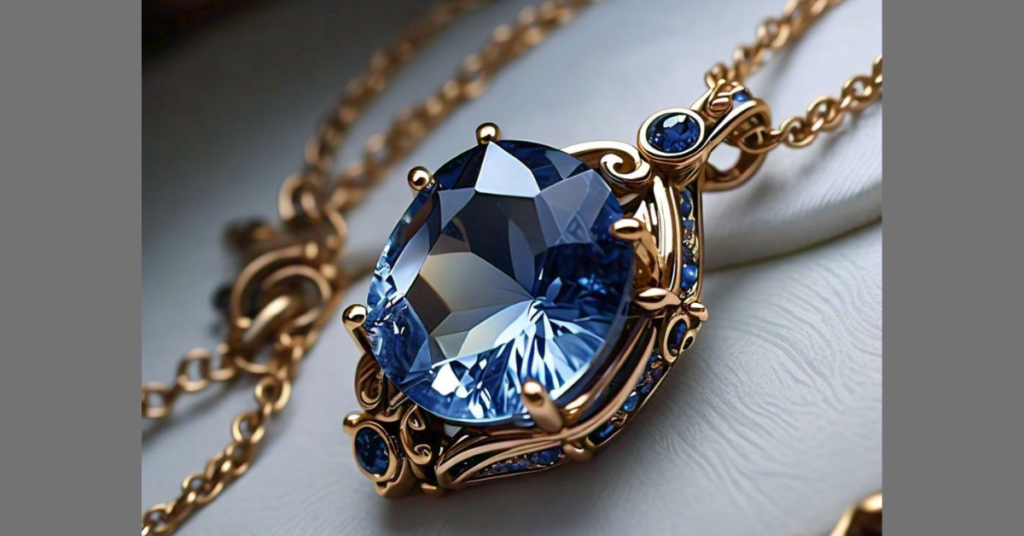
What qualities distinguish a superior sapphire?
A few distinguishing features set premium sapphires apart and add to their attractiveness and value. The following are the main things to think about:
Vibrancy
Hue, tone, and saturation are the three factors that determine a sapphire’s colour, which is considered to be its most important characteristic.
Vibrancy
Hue, tone, and saturation are the three factors that determine a sapphire’s colour, which is considered to be its most important characteristic.
Hue: The sapphire’s predominant colour, with blue being the most sought-after, is referred to here. The best sapphires have consistent colour and no zoning, which might make them less valuable.
Tone: This characterises how light or dark a colour is. Generally speaking, medium to medium-dark tones are preferred because they provide greater light brilliance and reflection.
Saturation: This describes how intense a colour is. A high-quality sapphire is characterised by high saturation, which is the state in which the colour appears vibrant and clear without grey or brown undertones.
Clarity: Sapphires of superior quality have few inclusions and outstanding clarity. Though normal and acceptable in certain cases, inclusions shouldn’t be able to be seen with the unaided eye or interfere with the stone’s brilliance. Few or no visible inclusions require magnification in superior sapphires.
Cut: A sapphire’s cut has a major impact on both its overall brilliance and beauty. A well-cut stone maximises its light performance and brings out its colour. Premium sapphires are usually faceted in a symmetrical and proportionate manner to maximise their brilliance and aesthetic appeal.
Rat Weight: Although larger sapphires are more valuable and unusual, size shouldn’t be at the expense of the stone’s overall quality and attractiveness. Larger sapphires counterbalance the other aspects of excellence, including as colour, clarity, and cut.
Starting point: sapphire’s value might also be influenced by its place of origin. Because of their historical significance and the distinctive qualities of the stones from these locales, sapphires from places like Sri Lanka (Ceylon), Burma (Myanmar), and Kashmir are frequently considered to be the greatest quality.
Treatment: Excellent sapphires are frequently left untreated or only slightly treated. Although heat treatment is widely used and acknowledged to improve colour and clarity, sapphires that have not been treated or have undergone very little treatment typically have a higher value. Sapphires that have undergone substantial treatments such as diffusion or fracture filling should be avoided as they may have an adverse effect on the durability and value of the stone.
Brilliance and Lustre: An exceptional sapphire reflects light brilliantly and has outstanding brilliance and lustre. The stone should glitter brilliantly and have a dynamic appearance.
In brief:
In conclusion, the following qualities define a sapphire of superior quality:
- strong saturation, medium to medium-dark tone, and vibrant, consistent colour.
- Excellent clarity with few discernible inclusions.
- Skilled cut that amplifies luminosity.
- substantial carat weight, especially in stones of superior quality.
- prestigious provenance, which may raise the stone’s value and appeal.
Which kinds of inclusions are most frequently found in sapphires?
Needles (Rutile): Sapphires frequently contain thin, needle-like inclusions that are frequently made of the mineral rutile. A star effect termed as asterism can be seen in star sapphires when these needles cross.
Zoning by Colour: This inclusion appears as coloured bands or areas inside the sapphire. Variations in the chemical composition of the crystal throughout its growth cause colour zoning, which can be affected by the cutting process and either increase or decrease the crystal’s visibility.
Feathers: These can resemble white feathers and are caused by interior fractures or fissures. The size of feathers varies, and if they come in contact with the sapphire, they could shorten its lifespan.
Spaces: Cavities are spaces or holes that can penetrate through the sapphire’s surface and into its interior. The look of the stone can be improved by treating these with cavity filling.
Crystals: Tiny, discrete minerals trapped inside sapphire during creation. Sometimes magnification helps identify these.
Fluid Additions: These liquid-filled pockets within the sapphire can reveal details on the formation circumstances of the stone. Certain liquid inclusions in sapphires with a metamorphic origin may be a sign that the stone has not been heat treated.
Parting Lines: These are weak points in the crystal structure that frequently take the form of straight or curved lines. Their uniqueness lies in their resemblance to cleavage planes at times.
Clouds: Clusters of microscopic inclusions within the sapphire that give the appearance of hazy or cloudy areas. The stone’s overall transparency and brilliance may be impacted by clouds.
Silk: The term “silk” describes tiny, needle-like rutile inclusions that can give sapphires a shimmering, silky look. These inclusions can increase the stone’s brilliance and are what give star sapphires their star effect—a pattern resembling a star formed by light reflecting off the silk inclusions.
Growth and Cavities Tubes: Tiny, empty spaces or tubular structures that were formerly liquid or gaseous. These may occasionally be seen with the unaided eye or through magnification.
These inclusions add to the individuality of every sapphire and offer insightful details about the stone’s provenance and past treatments. Assessing the quality and authenticity of sapphires requires an understanding of these inclusions.
Why do some sapphires have a higher value than diamonds?
A sapphire’s worth may surpass that of a diamond for a variety of reasons, including scarcity, special qualities, and market demand. The primary causes are as follows:
Scarcity and Distinctive Features
- Sapphires are found in a variety of colours, including blue, pink, yellow, and the uncommon Padparadscha, an orange-pink colour. Certain colours are more rare than others, especially untreated sapphires, which can command a premium above diamonds of same size and grade.
- Asterism: A star-like pattern forms on the surface of some sapphires, a phenomenon known as asterism. Star sapphires are especially valuable and can fetch premium prices that can even surpass those of diamonds.
- Natural vs. Treated: Untreated sapphires—those that haven’t gone through any sort of enhancement—are quite valuable. When opposed to diamonds, which are frequently treated to improve clarity and colour, their natural form increases in value.
Dynamics of the Market
- Supply and Demand: Compared to the diamond industry, which has historically been impacted by firms like De Beers, the sapphire market is less monopolised. Because of this, the price of sapphires can now be more naturally decided by supply and demand, which frequently results in increased accessibility to premium sapphires.
- Investment Potential: The value of sapphires is increasing as more people become aware of them, particularly for untreated stones. Record sales of sapphires have been reported by auction houses, suggesting a growing market interest that in some circumstances may exceed that of diamonds.
Which sapphire kinds are the most valuable?
The most precious varieties of sapphires consist of:
Padparadscha gems: The distinct pinkish-orange hue of these uncommon gems is striking. Their name is a play on the Sinhala phrase meaning “lotus blossom,” which captures the essence of their delicate and much desired colour.
Sapphires from Kashmir: Sapphires from Kashmir are regarded as the most precious and sought-after sapphires worldwide. They are renowned for having outstanding clarity and a deep, velvety blue colour. There are reportedly a few hundred Kashmir sapphires in the world. At auction, a premium Kashmir sapphire can bring in millions of dollars.
Sri Lankan (Ceylon) sapphires: Sri Lankan sapphires are highly valued, particularly those with a vivid blue hue. Sri Lanka is known for producing a large range of colours for sapphires, which further enhances its standing as a major supplier of sapphires of superior quality.
Burmese Ruby Sapphires: Chromium gives Burmese ruby sapphires their rich red hue, which makes them highly valued. In Burma’s Mogok region, they are mined (Myanmar). A 15.99-carat Burmese ruby sapphire that brought $50 million at auction in 2015 was the most expensive stone ever to be sold at auction.
Star sapphires: These sapphires have needle-like inclusions that generate asterism, a phenomena that resembles stars. Star sapphires of superior quality can be extremely valuable, particularly if they have a well-defined star and good colour.
Sapphires from Ceylon: Ceylon sapphires get their name from Sri Lanka, which was once known as Ceylon, and are prized for their vivid, deep blue hue. In upscale jewellery, they are frequently utilised as centre stones. Depending on quality, ceylon sapphires can cost anywhere from a few hundred to several thousand dollars per carat.
Cornflower Blue sapphires: Beautiful, medium-dark blue sapphires that bear a resemblance to cornflowers are extremely valuable. The best sapphires from Kashmir and Burma are frequently linked to this colour.
Sapphires from Australia: Queensland and New South Wales are the mining locations for Australian sapphires. They are distinguished by their distinctive colour zoning and deep blue hue, which give each stone its own personality. The demand for Australian sapphires is rising, and they are getting harder to find.
Star sapphires: These sapphires have needle-like inclusions that generate asterism, a phenomena that resembles stars. Star sapphires of superior quality can be extremely valuable, particularly if they have a well-defined star and good colour.
Fancy Colour Sapphires: Sapphires can be found in a range of hues, including as purple, pink, yellow, and green. Superior specimens of these unusual colours can be highly valuable, particularly if they have a great saturation and clarity.
What increases the value of a sapphire’s colour
The price and desirability of a sapphire are determined by a number of distinct factors, the most important of which being its colour.
Hue: The sapphire’s primary colour is quite important. Pure blue sapphires, sometimes called “true blue” or “cornflower blue,” are the most precious sapphires. Hue variations, such violetish-blue or greenish-blue, can influence value; purer tones are in more demand.
Saturation: The color’s intensity or vibrancy. Sapphires with rich, vibrant colours are worth more than those with muted or greyish tones. The most valuable sapphires have a vivid, deep colour that is neither too bright nor too dark.
Tone: The sapphire’s perceived lightness or darkness is indicated by its tone. Although they provide for a lively appearance without being unduly dark, which can reduce the stone’s appeal and price, medium to medium-dark tones are typically desired.
Evenness of Colour: A stone with consistent colour throughout is more valuable. Sapphires with zoning, or an uneven dispersion of colour, are worth less.
Transparency: The sapphire’s transparency and clarity are other important factors. Superior sapphires are usually “eye-clean,” which means they don’t have any obvious flaws or imperfections that might take away from their colour. Increased transparency can raise the value of the stone by allowing more light to pass through and boosting its brilliance and overall appeal.
Cut: The way light interacts with a stone and, consequently, how its colour is portrayed can be influenced by the quality of the cut. A sapphire with a good cut will display colour more consistently and efficiently.
Colour Rarity: Some sapphire colours, like scratchpad, which is a pink-orange blend, are rarer and can fetch higher prices. Certain colours’ scarcity can have a big impact on market demand and, in turn, value.
Origin: The sapphire’s origin might also affect its value because some places are renowned to produce stones with especially sought-after colour characteristics. For instance, sapphires with outstanding colour from Sri Lanka (Ceylon), Burma (Myanmar), and Kashmir are frequently highly prized.
Colour Treatments: In order to improve their colour, sapphires often receive colour treatments. Sapphires that have had little or no treatment are usually worth more. Although heat treatment is a routine and accepted therapy, sapphires that have undergone significant treatment may lose value.
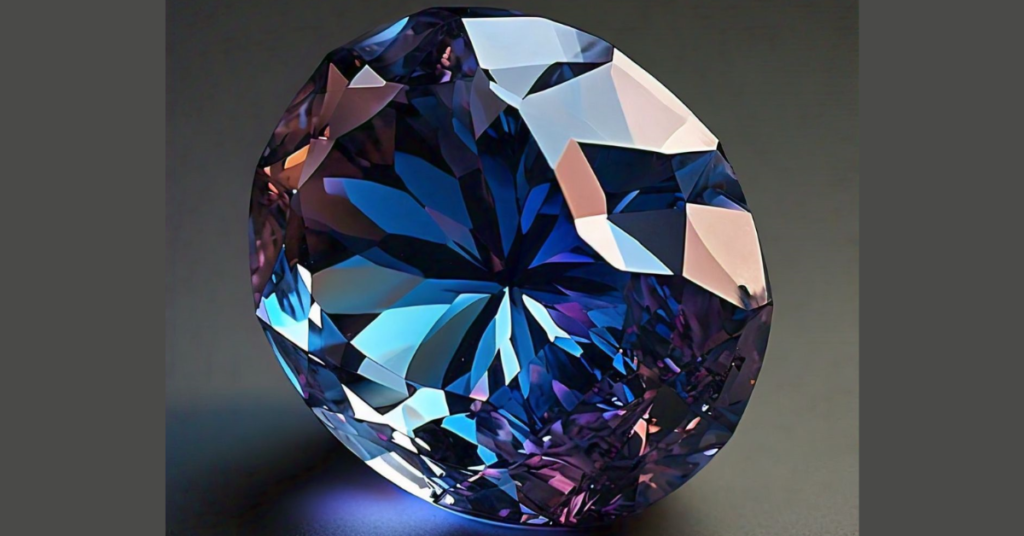
What effect does a sapphire’s colour tone have on its value?
The value of a sapphire is mostly determined by its colour tone. The following explains how a sapphire’s tone influences its value:
Optimal Tone Range
- Medium to Medium-Dark Tone: The most precious sapphires are often those in this range. The stone’s overall beauty and appeal are enhanced by its medium tone, which permits a vivid appearance.
- Light Tone: Lighter-toned sapphires could be seen as “washed out” or “unembellished,” which would reduce their appeal and price. Often, these stones don’t have the richness of colour that purchasers and collectors look for.
- Dark Tone: On the other hand, too-dark sapphires could look “inky,” which makes it challenging to recognise their hue. This may also depress its value because the brightness of the stone may be obscured by the depth of colour.
Tone’s Effect on Price
- Value Correlation: A sapphire is more likely to fetch a greater price if its tone is more in line with the medium range. For instance, a sapphire with a perfect tone that preserves clarity and brightness and has a rich, deep blue colour will be worth more than a counterpart that is too light or dark.
- Market Preferences: The popularity of particular tones is also influenced by market trends. For example, customer preferences show in the popularity of “cornflower blue” sapphires, which are typically medium to medium-dark in tone; this ideal can drive up the price of stones that match.
Why are Padparadscha sapphires so special and priceless?
Padparadscha sapphires are rare and precious because of their colour, cultural importance, and scarcity, among other unique qualities.
Special Shade
The exquisite colour of padparadscha sapphires, a subtle fusion of pink and orange, is well known. In the gemstone market, this unusual combination is widely sought after, evoking the feel of a tropical sunset. Its appeal and rarity are increased when the perfect padparadscha displays a subtle balance between these colours without favouring one over the other. The colour is even more fascinating because it changes appearance depending on the lighting.
Unpredictability
Among the rarest varieties of sapphires that are accessible are padparadscha sapphires. With a few isolated cases in Tanzania and Madagascar, their main habitat is Sri Lanka. Larger, unheated specimens are especially precious since high-quality padparadscha rough stones are extremely rare. Padparadscha sapphires larger than two carats are rare; those that weigh five carats or more are regarded as exceptional and are highly sought for by investors and collectors.
Cut and Clarity
Padparadscha sapphires may withstand certain inclusions although clarity being crucial because of their rarity. Significant inclusions that take away from the stone’s brilliance, however, will make it less valuable. The sapphire’s cut is also very important since it needs to bring out the colour and brilliance of the stone. The distinctive, asymmetrical cuts of padparadscha sapphires are frequently caused by the necessity to preserve material from the raw stone.
Value of Investment
Padparadscha sapphires are rare and have special qualities that make them valuable. They are often priced similarly to exquisite blue sapphires, rubies, or emeralds. Due to rising demand from investors and collectors, the market for these sapphires is expanding and increasing in value. Since unheated padparadscha sapphires are more costly and rare than treated stones, they are especially sought after.
What qualities distinguish the priciest sapphires?
The priciest sapphires have a few essential traits in common:
Vibrancy
- Kashmir sapphires are valued for their intense, vivid blue colour, which is rich and velvety.
Vibrant cornflower blue: Ceylon (Sri Lanka) sapphires with a cornflower blue hue are quite rare. - Padparadscha sapphires are exceedingly rare and precious due to their distinctive pink-orange colour that is reminiscent of a lotus flower.
Starting point
- Kashmir: Because of their remarkable colour and scarcity, sapphires from this part of India are thought to be the most precious.
- Ceylon (Sri Lanka): The birthplace of the well-known “Blue Belle of Asia” sapphire, Ceylon is noted for its vivid blue sapphire production.
- Myanmar, or Burma: Because of their deep red colour and clarity, Burmese sapphires are highly valued; at auction, some of them can bring record prices.
Dimensions and lucidity
- Huge size: At 478.68 carats, the Queen of Romania sapphire ranks among the top five largest in the world.
- Superb lucidity: Superior sapphires are more valuable since they are untreated and contain less inclusions.
Unpredictability
- Unheated and untreated: Unheated sapphires that have not been enhanced or heated are incredibly rare and expensive.
- There are only a few hundred known padparadscha sapphires, making them the rarest kind of sapphire.
Why are eye-clean sapphires so precious and uncommon?
A number of important characteristics pertaining to the purity and general quality of eye-clean sapphires make them unusual and precious.
Eye-Clean Sapphires’ Uniqueness
- The majority of sapphires have inclusions, which are defects or foreign things inside the stone that can change how it looks. Eye-clean sapphires are extremely unusual because they don’t have any imperfections that the unaided eye can see. When examined under magnification, even high-quality sapphires can have some inclusions, thus the lack of obvious faults is a key differentiator.
- Formation Conditions: Over millions of years, under particular geological circumstances, sapphires form. Large crystals can form because of the gradual cooling of the magma, however inclusions are frequently introduced during this process. A sapphire’s rarity is increased by the less inclusions it has in more perfect conditions.
- Market Demand: The jewellery industry’s need for eye-clean sapphires raises their worth. Because customers frequently choose stones with clarity and brilliance without discernible flaws, eye-clean sapphires are quite valuable. Their scarcity combined with demand drives increasing prices at auction and in stores.
Valuation Elements
- Clarity Grading: An important factor in determining a sapphire’s value in the grading process is clarity. Since eye-clean sapphires are the clearest, they are also the most costly. Even if somewhat incorporated stones can still be very attractive, their value is not as high as that of eye-clean samples.
- Size and Colour: Eye-clean sapphires ought to have both acceptable colour qualities and clarity. The sapphires with eye-clean clarity and rich, vivid colours are the most valuable. Because they are considerably more uncommon, larger eye-clean stones are worth even more.
- Treatment Status: To improve their colour and clarity, sapphires are often treated. Untreated or little processed sapphires that are eye-clean are very valued since they are thought to be more genuine and natural. The market value of a sapphire can be greatly impacted by treatments, with untreated stones selling for more money.
FAQ 10 concerning pricey stones like sapphires
Q,1. What is used to make sapphires?
A,1. Sapphires’ primary substance is aluminium oxide, or corundum, though trace components can give them a variety of colours. For instance, titanium produces blue sapphires, but iron produces yellow ones.
Q,2. What is the price of sapphires?
A,2. Sapphires range widely in price according to size, quality, colour, and clarity. The cost per carat can vary from $20 to over $200,000, with premium stones fetching significantly higher prices.
Q,3. Which sapphire type is the priciest?
A,3. Deep blue Kashmir and Ceylon sapphires are usually the most valuable sapphires; they can sell for over $200,000 per carat. Also in great demand is the uncommon orange-pink Padparadscha sapphire.
Q,4. Do sapphires cost a higher price than diamonds?
A,4. In general, sapphires cost less per carat than diamonds. On the other hand, premium sapphires, particularly in uncommon hues, can match or even surpass the cost of diamonds.
Q,5. What variables affect the price of sapphires?
A,5. The “Four Cs”: colour (intensity and evenness), clarity (amount of inclusions), cut (shape and quality of the cut), and carat weight (size) are what determine a sapphire’s price.
Q,6. From where do sapphires come?
A,6. Around the world, sapphires are mined; significant producers include Madagascar, Australia, Sri Lanka, and Myanmar (Burma). Different qualities of sapphires are produced in each region.
Q,7. What kind of procedures are used on sapphires?
A,7. Most sapphires undergo treatment to improve their clarity and colour. Diffusion, radiation, and heat treatment are common treatments; untreated sapphires are exceedingly rare and precious.
Q,8. How ought sapphires to be maintained?
A,8. Even though sapphires are strong, they still need to be handled carefully. To keep them brilliant, give them a gentle brush and warm, soapy water on a regular basis.
Q,9. Do artificial sapphires really resemble sapphires?
A,9. Made in a lab, synthetic sapphires are identical to natural sapphires chemically. They may share some visual similarities, but they don’t have the same scarcity or distinctive qualities as real stones.
Q,10. What signify do sapphires have?
A,10. Sapphires are frequently linked to dignity, loyalty, and wisdom. They also symbolise protection and direction for travellers, making them the birthstone for September.



